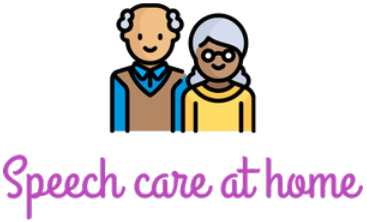Telehealth Stroke Rehabilitation
813-344-3207

Stroke, a devastating medical condition, affects millions of people worldwide, leaving survivors with physical, cognitive, and emotional challenges. Rehabilitation plays a crucial role in helping stroke survivors regain independence and improve their quality of life. Traditionally, stroke rehabilitation has been delivered in face-to-face settings, requiring patients to visit healthcare facilities regularly. However, with the advent of telehealth, stroke rehabilitation is undergoing a transformation, making it more accessible, convenient, and effective for patients. In this article, we will explore the world of telehealth stroke rehabilitation, its benefits, challenges, and the future it holds for stroke survivors.
The Evolution of Stroke Rehabilitation
Stroke rehabilitation has come a long way since its inception. In the past, it primarily focused on physical therapy, aiming to restore motor function and reduce disability. Over time, stroke rehabilitation has evolved to encompass a multidisciplinary approach, addressing not only physical impairments but also cognitive and emotional aspects of recovery. This comprehensive approach aims to maximize the functional independence and quality of life of stroke survivors.
Traditionally, stroke rehabilitation has been conducted in clinical settings, requiring patients to commute to hospitals or specialized rehabilitation centers. These in-person sessions, although effective, can be challenging for stroke survivors, particularly those with mobility issues, transportation limitations, or living in remote areas. Moreover, the COVID-19 pandemic has further highlighted the need for alternative healthcare delivery methods, leading to the accelerated adoption of telehealth solutions across various medical specialties, including stroke rehabilitation.
Telehealth Stroke Rehabilitation: The Basics
Telehealth, also known as telemedicine or virtual healthcare, refers to the use of technology to provide healthcare services remotely. Telehealth encompasses a wide range of services, including consultations, diagnoses, and therapy sessions. For stroke survivors, telehealth offers a lifeline to receive rehabilitation services from the comfort of their homes, eliminating many barriers to accessing care.
Telehealth stroke rehabilitation involves the use of videoconferencing, mobile apps, wearable devices, and other digital tools to facilitate remote therapy sessions and monitoring. These sessions can include physical therapy, occupational therapy, speech therapy, and cognitive rehabilitation, among others. Here’s how telehealth stroke rehabilitation works:
Initial Assessment: The process typically begins with an initial assessment conducted by a healthcare provider or therapist through a virtual video call. During this assessment, the therapist evaluates the patient’s physical and cognitive function, reviews medical history, and sets rehabilitation goals.
Individualized Treatment Plan: Based on the assessment, the therapist designs an individualized treatment plan tailored to the patient’s specific needs and goals. This plan may include a combination of exercises, activities, and educational resources.
Remote Therapy Sessions: Patients engage in regular remote therapy sessions with their therapists, following the prescribed treatment plan. These sessions can include exercises to improve mobility, strength, and coordination, as well as cognitive exercises to address memory and language impairments.
Monitoring and Progress Tracking: Wearable devices and mobile apps may be used to monitor the patient’s progress and collect data on their activities, vital signs, and adherence to the treatment plan. This data allows therapists to make necessary adjustments to the rehabilitation program.
Education and Support: Telehealth also provides an avenue for stroke survivors and their caregivers to receive education and support related to stroke recovery, lifestyle modifications, and emotional well-being.
Benefits of Telehealth Stroke Rehabilitation
Increased Accessibility: Telehealth eliminates geographical barriers, allowing stroke survivors in rural or underserved areas to access specialized rehabilitation services. This increased accessibility is crucial for timely intervention, as early rehabilitation is often associated with better outcomes.
Convenience: Patients can schedule therapy sessions at their convenience, reducing the need for time-consuming travel to healthcare facilities. This convenience is especially valuable for individuals with limited mobility or transportation options.
Continuity of Care: Telehealth ensures continuous care, even during situations like the COVID-19 pandemic when in-person visits may be restricted. It allows stroke survivors to maintain their rehabilitation progress without interruptions.
Personalized Care: Telehealth stroke rehabilitation enables therapists to deliver highly personalized care, tailoring treatment plans to the individual needs and progress of each patient. This individualized approach enhances the effectiveness of rehabilitation.
Cost Savings: Telehealth can lead to cost savings for both patients and healthcare systems. Patients save on transportation expenses and potential hospital stays, while healthcare facilities benefit from reduced overhead costs associated with in-person care.
Improved Adherence: Some patients may be more likely to adhere to their rehabilitation programs when they can participate from the comfort and privacy of their homes, increasing the likelihood of successful recovery.

Challenges and Considerations
While telehealth stroke rehabilitation holds great promise, it is not without its challenges and considerations:
Technological Barriers: Not all stroke survivors have access to the necessary technology or the digital literacy required for telehealth. Addressing these disparities is essential to ensure equitable access to care.
Hands-On Assessment: Some aspects of stroke rehabilitation, such as hands-on assessments of muscle strength or joint mobility, are challenging to replicate remotely. In these cases, a hybrid approach that combines in-person and virtual sessions may be necessary.
Privacy and Security: Ensuring the privacy and security of patient data and telehealth sessions is a paramount concern. Healthcare providers must adhere to strict standards and protocols to protect patient information.
Insurance Coverage: The reimbursement landscape for telehealth services is still evolving, and not all insurance providers cover virtual rehabilitation to the same extent as in-person care. Advocacy and policy changes may be needed to improve coverage.
Human Connection: Virtual therapy sessions may lack the personal touch and human connection that in-person interactions provide. Therapists must make extra efforts to establish rapport and provide emotional support through digital platforms.
Technical Issues: Technical glitches, such as poor internet connectivity or device malfunctions, can disrupt telehealth sessions. Patients and healthcare providers should have contingency plans in place for such situations.
The Future of Telehealth Stroke Rehabilitation
The future of telehealth stroke rehabilitation is bright, with ongoing advancements in technology and healthcare delivery models. Here are some developments and trends to watch for:
AI-Powered Rehabilitation: Artificial intelligence (AI) and machine learning are being integrated into telehealth platforms to provide personalized rehabilitation recommendations based on patient data and progress.
Virtual Reality (VR) Rehabilitation: VR technology is increasingly being used to create immersive rehabilitation experiences that engage stroke survivors in interactive and motivating exercises.
Remote Monitoring Devices: The development of wearable devices and sensors continues, allowing for real-time monitoring of patients’ vital signs, movement, and adherence to rehabilitation exercises.
Tele-Rehabilitation Robotics: Robotic devices controlled remotely by therapists are being developed to assist patients with physical therapy exercises, enabling more precise and effective rehabilitation.
Expanded Insurance Coverage: As telehealth becomes more widely accepted, insurance coverage for virtual rehabilitation services is expected to improve, making it more accessible and affordable for patients.
Interdisciplinary Collaboration: Telehealth platforms are facilitating collaboration between healthcare providers from various disciplines, ensuring comprehensive care for stroke survivors.
Telehealth stroke rehabilitation represents a significant advancement in healthcare, offering stroke survivors increased accessibility, convenience, and personalized care. While it comes with its challenges, ongoing technological developments and policy changes are poised to address many of these issues. As telehealth continues to evolve, it holds the potential to revolutionize stroke rehabilitation, improving the lives of countless individuals on their journey to recovery. With a
Speech Care at Home

